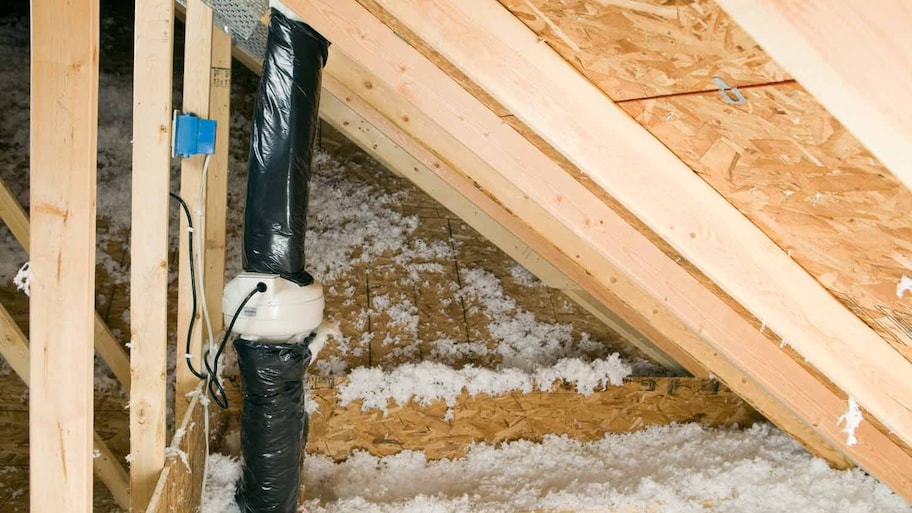How to Test for Radon in Your Home
There's another colorless, odorless gas to look out for


What you can't see or smell can hurt you. Radon, an odorless, colorless gas, can build up in your home, potentially causing breathing difficulties and increasing your risk for lung cancer. Luckily, you can test for and mitigate your home's radon levels. Here's how to test for radon in your home.
Why Test for Radon

Water, rocks, and soil all give off radon, as do some building materials. The gas is naturally present in the air around you, but in very small amounts. Outdoors, the gas disperses and doesn't present a health risk. Indoors, it can build up, increasing cancer risk.
Radon can enter your home through cracks in the foundation, whether you have a basement or not. Testing your home reveals if you have elevated radon levels, allowing you to take action to mitigate the problem and protect your health.
The Cost to Test for Radon
How much a radon test costs depends on whether you DIY or hire a local radon testing company. You can purchase a radon testing device for about $15 to $30. A radon testing company will usually charge a flat fee for testing, often about $150.
When to Test for Radon
There are a few points when it's a good idea to test your home for radon. If you've owned your home for a while and have never tested it, now's the time to do so.
A radon test is typically recommended as part of the home inspection before you buy a home. If you're selling your home, it's a good idea to perform a radon test, so you can fix the issue, if needed, before putting your home on the market.
Another good time to schedule or perform a radon test is before renovations, particularly if those renovations will involve finishing your basement or creating a bedroom on the lower level. Repeat the test after the renovations are complete to ensure that the changes didn't contribute to radon buildup.
How to Test for Radon in Your Home
You can either DIY or work with a professional radon testing company. Performing a test yourself can be an option if you've never tested for radon or are about to start renovations. If you're selling or buying, it's usually best to hire a professional to do the test.
Whether you use a home test or a professional company, the target is a radon level under 4 picocuries per liter.
Testing With a Kit
Radon testing kits are relatively easy to find and affordable. You can purchase a radon testing kit at a hardware store, from the National Radon Program Services, or by contacting your state radon program.
The test should include clear instructions on how to install it up and collect air samples. Depending on the test type, it may need to test the air for a few days, weeks, or months. After the collection period, you send the testing device to a lab, which then provides you with results.
Hiring a Professional
Another option is to hire a certified company to perform radon testing for you. The company will set up a device in your home, often in the basement, that measures radon levels in the air over a period. Once the test is complete, they will provide you results and advice about next steps, if any.
Taking Care of Radon
If the test reveals that your home's radon levels are over 4 picocuries per liter, you should repeat the test to confirm the accuracy of the results. If you used a home test, you may consider hiring a pro to repeat the process.
For rests lower than 2 picocuries per liter, you don't have to take any further action. If the test reveals radon amounts between 2 and 4 picocuries per liter, you may wish to install a radon reduction system. You'll want to hire a certified radon mitigation company for the job, to ensure the system is installed correctly.
For confirmed levels over 4 picocuries per liter, a radon mitigation or reduction system is a must.
Once you've had the system installed, repeat radon testing in several months to confirm the levels are dropping.
DIY vs. Hiring a Pro
While home tests will provide you with an accurate result, you're likely to get more immediate results from a radon testing company. You can also feel confident that a certified, professional radon testing company has set up the testing equipment correctly.
Even though home tests come with instructions, it's possible to misunderstand them and set up the device wrong, which may affect your results.
When selling or buying a home, it's always best to go pro for radon testing. Some states may even require a professional radon test before the sale of a home.
Frequently Asked Questions
Radon doesn't smell, is invisible, and has no taste, so there are no obvious signs that you may have elevated radon levels at home. In some cases, the first signs that there may be high radon levels are health problems, particularly respiratory issues. The only way to know if radon levels are elevated is by testing.
High radon levels can be a problem in any type of home, including new homes and houses without basements. Your home may be exposed to radon from the surrounding soil or if there is well water nearby. Some types of building materials may also give off radon, increasing the levels in your home.
